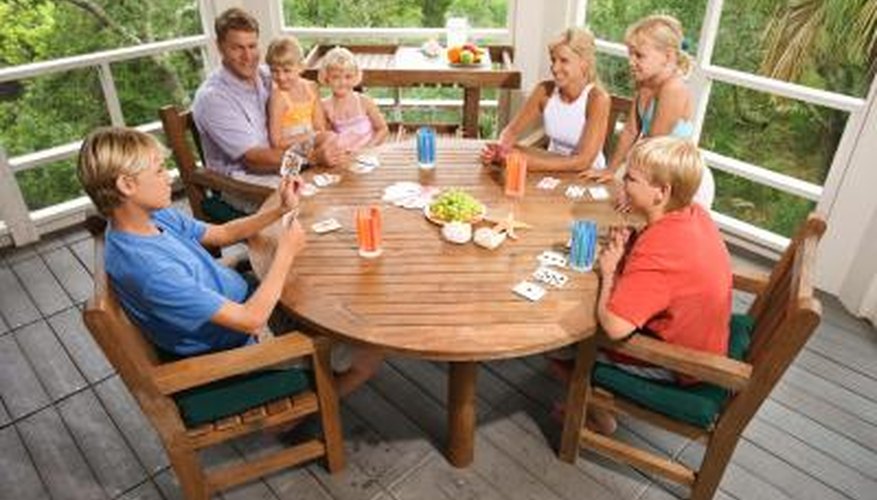An open porch can be wonderful in ideal weather. But the weather is not always ideal, so enclosing the porch can make it more useful and usable. Framing is the key to any porch enclosure, whether it's screens and storm windows or permanent walls with big windows. A good frame starts with the floor. A good concrete porch is a great base; if your porch has a wood floor, you need to decide whether to replace it; a good wood floor on a firm foundation may be acceptable.
- An open porch can be wonderful in ideal weather.
- A good concrete porch is a great base; if your porch has a wood floor, you need to decide whether to replace it; a good wood floor on a firm foundation may be acceptable.
Decide on your floor and roof. If the existing porch floor is acceptable and the roof is good, you have saved yourself the biggest part of enclosing a porch. Decide whether to keep or change the exterior of the house where the porch joins it, as well as what to do with existing doors and windows. If you are replacing siding, remove it before starting to frame the enclosed porch.
Install bottom plates for walls. Use existing corner posts, if possible; if they are 4-by-4s, it will be easy; if they are rounded, frame them with 1-by-4 lumber to make them square. Install top and bottom plates; nail a 2-by-4 to the roof beams for a top plate and double 2-by-4s for a bottom plate, using pressure-treated lumber; add an insulating moisture barrier underneath. Fasten the bottom plate to the floor. If you are using an existing wood floor, use long galvanised screws. If the floor is concrete, drill holes and cement in anchor bolts, which will go through the bottom plate; an alternative is to use special concrete nails or screws to fasten the bottom 2-by-4 to the floor.
Place upright studs according to how you plan to finish the walls. If you are making permanent walls, place studs 16 inches apart on centre, framing out the door and window openings. If you are using large screens or big windows, place full-length ("king") studs on either side of the opening, then nail cross members at the top and bottom of the screen or window, supported with short ("cripple") studs between those boards and the top and bottom plates.
- Install bottom plates for walls.
- If you are using large screens or big windows, place full-length ("king") studs on either side of the opening, then nail cross members at the top and bottom of the screen or window, supported with short ("cripple") studs between those boards and the top and bottom plates.
Cover the walls. Put up oriented strand board (OSB) on the exterior, cover it with vapour seal, then put on siding. If you are making permanent walls, staple insulation between the studs and install wallboard on the interior. If you are using screen panels or windows, install those in the frames, then either leave the interior walls open or finish with wallboard. Add exterior and interior trim boards to complete the job.
